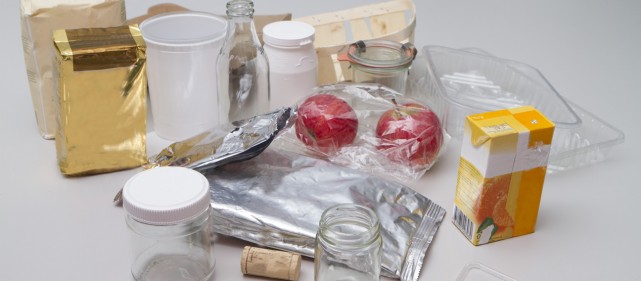In recent years, growing evidence has emerged about the hidden dangers lurking in our food packaging. Beyond just keeping our food fresh, some packaging materials may contain harmful chemicals that, over time, can migrate into the food we eat and eventually find their way into our bodies. The presence of these chemicals in humans is raising alarm bells about potential health risks and urging a call for more stringent regulations and safer alternatives.

What Are These Chemicals?
The chemicals in question include a range of synthetic substances, many of which are commonly used in the production of food packaging. Some of the most notorious ones include:
- Bisphenol A (BPA): Used in the lining of canned foods and certain plastics, BPA is known for its hormone-disrupting properties, potentially interfering with the body’s endocrine system.
- Phthalates: Often found in plastics, phthalates are used to make materials more flexible. However, they are also linked to hormone disruption and reproductive health issues.
- PFAS (Per- and Polyfluoroalkyl Substances): Used to make packaging materials resistant to grease and water, PFAS compounds have been labeled as “forever chemicals” because they persist in the environment and the human body, leading to concerns about long-term exposure.
How Do These Chemicals Enter the Body?
The primary pathway for these chemicals to enter our bodies is through leaching—when chemical substances from packaging materials migrate into the food. This leaching can be influenced by factors such as:
- Heat: When food is heated inside its packaging, especially in plastic containers, it increases the likelihood of chemicals transferring into the food.
- Fat content: Fatty or oily foods are more likely to absorb these chemicals, particularly from certain plastics or coatings.
- Packaging wear: Over time, as packaging degrades, more chemicals may be released into the food.
Once ingested, these chemicals can accumulate in the body, potentially leading to a range of health concerns. Studies have shown that traces of BPA, phthalates, and PFAS can be found in the blood and urine of individuals, signaling widespread exposure.
The Health Risks
The effects of these chemicals on human health have been the subject of extensive research, with alarming findings. Hormone disruptors like BPA and phthalates can mimic or block natural hormones, leading to problems with reproduction, metabolism, and even cancer.
- BPA exposure has been linked to increased risks of heart disease, diabetes, and developmental problems in children.
- Phthalates are associated with reduced fertility, developmental delays in children, and respiratory issues.
- PFAS compounds have been connected to a range of serious health issues, including liver damage, immune system dysfunction, and even an increased risk of certain cancers.
How Widespread Is the Exposure?
Studies conducted on populations across the globe have found detectable levels of these chemicals in the majority of individuals tested. In the U.S., a study by the Centers for Disease Control and Prevention (CDC) discovered BPA in nearly 93% of urine samples from participants, while phthalates and PFAS have been found in the blood of most Americans.
This widespread exposure is not limited to any one demographic but affects individuals across all age groups, raising particular concerns for vulnerable populations such as pregnant women and children, whose developing systems are more susceptible to these toxic effects.
Regulatory Efforts and Industry Response
In response to the growing body of evidence, regulatory agencies in some regions have begun taking action. The European Union has imposed stricter regulations on the use of certain chemicals in food packaging, including limiting BPA in products like baby bottles. In the U.S., some states have begun to enact bans on PFAS in food packaging materials, though federal regulations remain relatively lax.
At the same time, public pressure has pushed many companies to explore safer alternatives. Some manufacturers are now marketing “BPA-free” products, though these often replace BPA with similar chemicals like bisphenol S (BPS), which may pose similar risks. A more holistic approach is needed to eliminate hazardous substances entirely and move toward truly safe packaging solutions.
What Can Consumers Do?
While regulatory changes are slow, consumers can take certain steps to reduce their exposure to hazardous chemicals in food packaging:
- Choose fresh food over canned and pre-packaged goods: Fresh foods are less likely to be exposed to chemical-laden packaging.
- Avoid heating food in plastic containers: Heat can cause more chemicals to leach into food. Opt for glass or ceramic containers instead.
- Be cautious of “BPA-free” labels: These may still contain other harmful chemicals. Look for products that explicitly avoid the use of harmful substances like phthalates or PFAS.
- Check packaging for recycling codes: Plastics labeled with recycling codes 3 (PVC), 6 (PS), and 7 (other) are more likely to contain harmful chemicals.
The Road Ahead
The growing awareness of hazardous chemicals in food packaging highlights the need for more comprehensive research and tighter regulations. As more data emerges on the long-term effects of these substances, both consumers and industries must push for safer alternatives that don’t compromise public health. In the meantime, being mindful of packaging choices and supporting companies that prioritize safety can make a difference.
The presence of these chemicals in both our food and our bodies is a wake-up call—one that calls for immediate action to protect future generations.
Leave a Reply